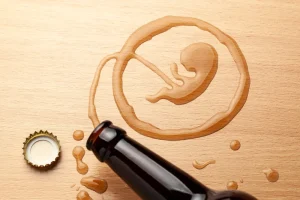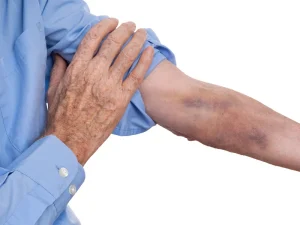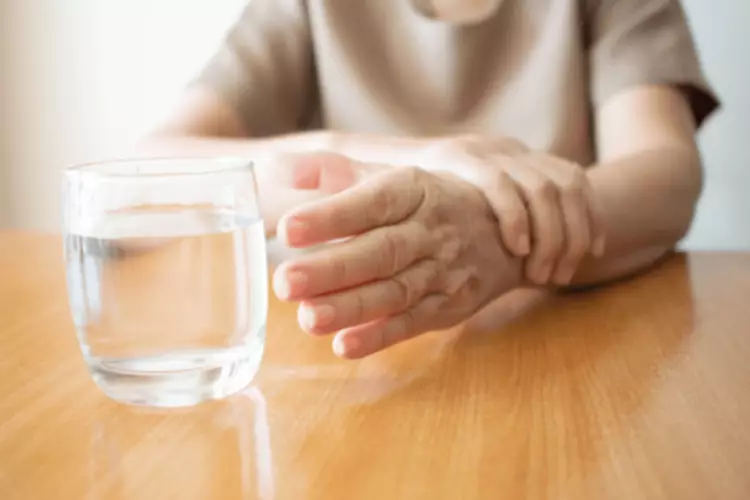Kari is passionate in her work with patients and referents to establish care plans and discharges that provide for the best success in recovery. Lisa joins our clinical team as our Family Services Coordinator. She brings with her over 25 years of experience and knowledge surrounding substance abuse, the disease of addiction, and the impact of this illness on patients, families and the community. She is a Licensed Advanced Drug and Alcohol Counselor, LAADC, and has a Master’s Degree in Counseling/ Psychology. Lisa is dedicated to helping individuals and families heal from the pain of addiction.
Phone, Video, or Live-Chat Support
Treatment involves quitting drinking, which can be difficult for an end-stage alcoholic. During end-stage alcoholism, a person may struggle with involuntary rapid eye movement (nystagmus) or weakness and paralysis of the eye muscles due to thiamin (vitamin B1) deficiency. This deficiency can also cause dementia if not treated immediately. Has been an expert in addiction medicine for more than 15 years. In addition to managing a successful family medical practice, Dr. Hoffman is board certified in addiction medicine by the American Osteopathic Academy of Addiction Medicine (AOAAM). Dr. Hoffman has successfully treated hundreds of patients battling addiction.
Middle-Stage
Timothy Morgan, MD, explains that “Cessation of alcohol is necessary18 to treat alcoholic liver disease.” And even with total abstinence, you might experience some chronic symptoms. Before you leave rehab, talk to your care team and make a plan for your ongoing treatment. End-stage alcoholism can lead to long-term health issues, damage to internal organs, and brain damage. Without proper medical attention, the condition can be fatal. You may start out with a drink in the evening after a challenging day at the office or when socializing with friends. At a golf outing, you may have had more drinks than you had planned.
What Are the Symptoms of End-Stage Alcoholism?
Support groups can be a highly effective form of help at this stage. Stopping is impossible at this point without professional help because of the severe and potentially life-threatening withdrawal symptoms that would occur if they quit cold turkey. By this stage, their drinking is taking an obvious physical toll as well. They may appear red in the face or look bloated and generally unwell. The alcoholic probably isn’t sleeping or eating well at this point and may not be keeping up with personal hygiene. We believe everyone deserves access to accurate, unbiased information about mental health and addiction.
- Whatever conditions you’re facing, addiction recovery is almost certainly an important part of treatment.
- Esther received a Certificate of Achievement in Addiction Studies at San Diego City College and has been a certified CADCII since 2002.
- Chronic, long-term drinking can contribute to malnutrition by replacing foods needed for essential nutrients and by interfering with absorption, storage, or metabolism of the essential nutrients.
- While in this phase, an individual may still be able to function at work and home, but friends or family may begin to notice changes in their behavior.
- Additionally, those who grow up around alcohol or someone addicted to alcohol are more likely to drink and develop an addiction themselves.
With excessive alcohol consumption, this important organ can’t metabolize Vitamin D, which could develop into a deficiency. Some common signs and symptoms of cirrhosis include fatigue, itchy skin, weight loss, nausea, yellow eyes and skin, abdominal pain and swelling or bruising. In addition to physical health 10 ways to control high blood pressure without medication nch healthcare system problems, alcoholism can cause debilitating mental health issues. Alcoholism can also make symptoms of an underlying mental condition worse. People with mental health conditions may try using alcohol to self-treat their condition, leading to an alcohol use disorder and worsening their original disorder.
How Is Recovery.com Different?
Severe abdominal pain and persistent diarrhea, as a result, is not fixable. Blacking out from drinking too much is a warning sign of this stage, along with lying about drinking, drinking excessively, and thinking obsessively about drinking. Connect with a rehab for alcoholism to start planning a better future. Willow Springs Recovery is a private, countryside campus offering detox and customized treatment plans for adults, located just outside Austin, Texas.
He developed the concept of the progressive phases of alcoholism, which became known as the Jellinek curve. He defined and described the disease’s progression, including its art therapy for addiction physical and mental characteristics. No matter what stage of addiction you or a loved one may be in, addiction treatment is available to help you overcome alcoholism.
Effective addiction treatment providers will have addiction counselors, but they should also have mental health services as many people with alcoholism have co-occurring mental health conditions. Cirrhosis of the liverOur liver filters out harmful substances, cleans our blood, stores energy and aids in digestion. Too much alcohol can be toxic to liver cells, causing dehydration and permanent scarring—which ultimately affects the blood flow.
Some research shows that alcohol abuse raises your risk of heart problems12 including arrhythmia, heart attack, and congestive heart failure. Other studies report that drinking may protect against some common symptoms of heart disease.13 We need more data to understand the big picture. The health complications that come with end-stage alcoholism increase the likelihood of death. However, alcoholics can prolong their life if they stop drinking. During the middle stage of alcoholism, symptoms become apparent to friends and family members.
You will experience the physical effects of alcoholism like weight gain or loss, stomach bloating, alcohol withdrawal headaches and shakiness, particularly when you’re craving a drink. Yes, effective treatment options for early-stage alcoholism include behavioral therapies and support how long does ayahuasca last a comprehensive guide for journeyers groups. Because this stage does not involve physical dependence, rehabilitation may not be necessary. After a long period of continuous heavy drinking, alcohol has contributed to the damage and deterioration of vital organs such as the liver, heart, kidneys, pancreas, and brain.
Many centers offer 24/7 care to help you navigate this difficult time. You could have one or many of the diseases that often appear in this phase of AUD. And for every illness, different people have different symptoms.
Typically, people in the first stage of alcoholism do not notice the harmful effects of alcohol because they’re not experiencing withdrawal symptoms. They may use alcohol to relieve stress but also enjoy being high or drunk. In its earlier stages, alcoholics suffering from Wernicke-Korsakoff syndrome may be treated through taking Vitamin B-1, proper nutrition and abstinence from alcohol. Even with treatment, some people may not be able to regain full brain function.
Someone in even the most advanced stages of alcoholism will benefit from stopping. The more advanced the alcoholism is, however, the more important it is that you seek medical help during the detox process. Drink and work don’t mix well, potentially leading to mistakes, bad interactions with customers or fellow employees and tardiness or excessive absences. It is important to note that while alcoholism can lead to employment challenges, many functioning alcoholics can work effectively. Having a job that you are successful in does not mean that you do not have a problem with alcohol. Get you or your loved one help for addiction or mental health issues today.
The final stage of an alcohol use disorder is end stage alcoholism, which results from years of alcohol abuse. The individual in end stage alcoholism will experience serious mental and physical conditions, including possible life-threatening health conditions. You are no longer drinking for pleasure now, but because you feel a physical and psychological need to drink.
Death is usually caused by a combination of internal bleeding and a buildup of toxins within the body and can include seizures and/or cardiac arrest. At Providence Treatment, we understand that end stage alcoholism can be scary and it can be overwhelming for you to admit that you need help for your addiction to alcohol. When you are ready to get outpatient addiction treatment in Philadelphia, we are ready to help you. Our expertise is in serving high-profile clients and licensed professionals like you.






















